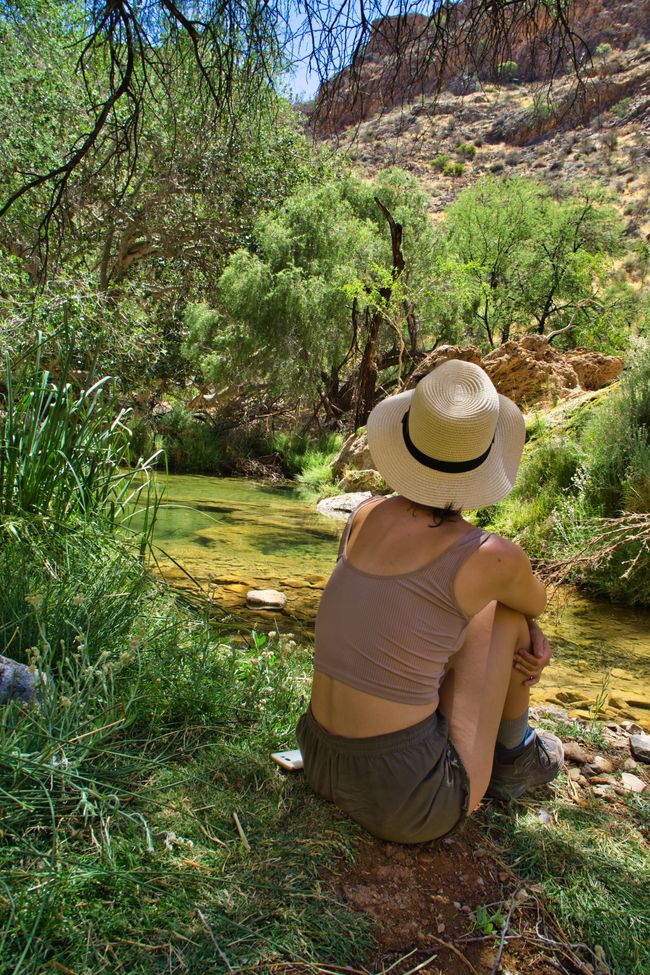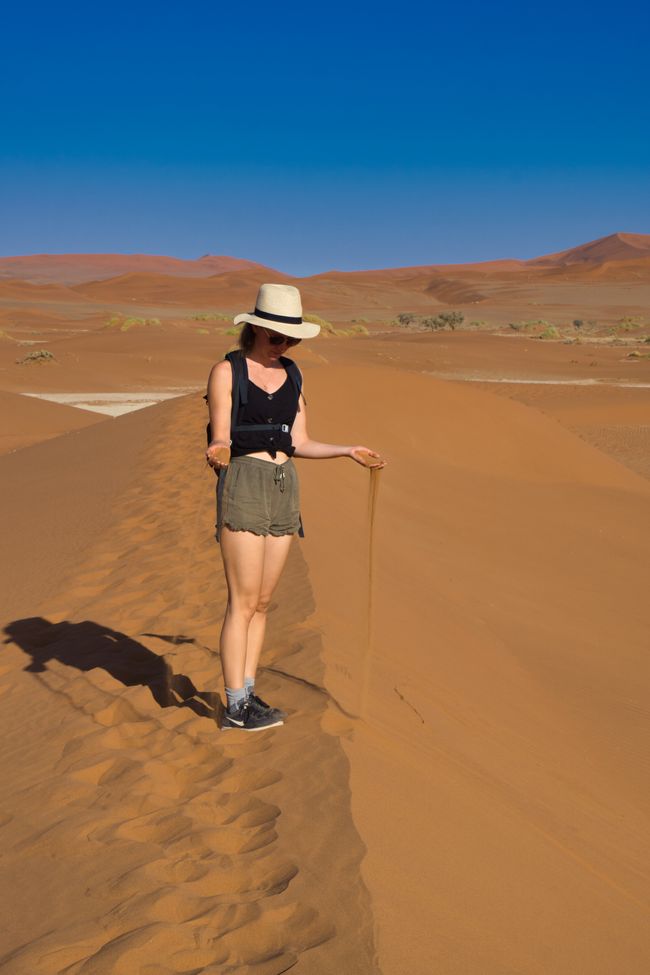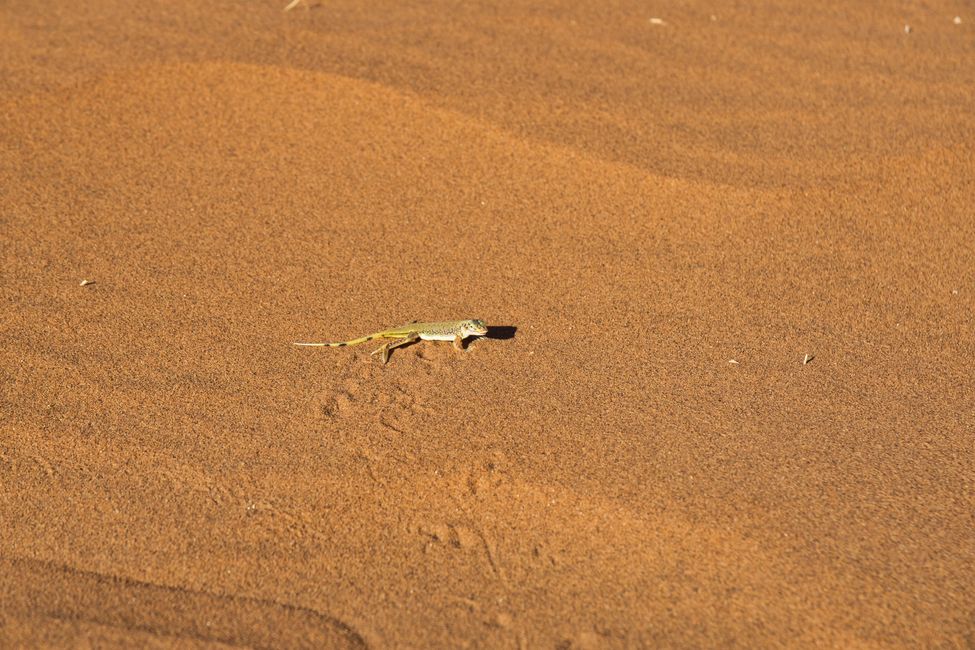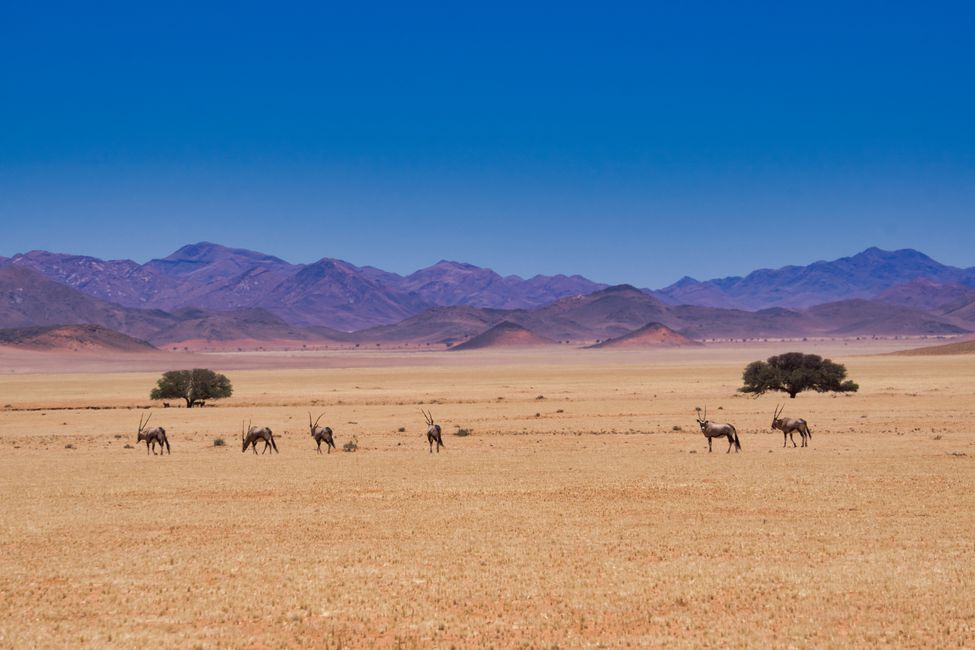Namib-Naukluft National Park
उजवाडाक आयलां: 30.11.2021




































खबरांपत्राची सदस्यताय घेयात
If there is war, we go into the desert. Well, something like that. The next section of our road trip takes us to the Namib-Naukluft National Park, which extends to the south to the Diamond Restricted Area. With an area of approximately 50,000 km², the Namib-Naukluft Park is the largest national park in the world, although a large part of the endless desert area cannot be visited. The main tourist attraction are the huge sand dunes of Sossusvlei, where our route will take us in a few days. But first, we have to drive from Swakopmund through the Kuiseb Pass towards the south. From Walvis Bay, a port city south of Swakopmund, we drive inland and after a few kilometers we notice how the clouds become less, the temperature rises, and the earth turns redder. Past Dune 7, the highest dune in the world - at least according to the Namibians - we drive towards the almost 2000 meter high Naukluft Mountains. After a few hours, we cross the Kuiseb Canyon and look at barren, desolate desert landscape. No plants, no animals, no other cars as far as the eye can see. At the beginning of World War II, two German geologists hid here for over two years to avoid being interned. The exact story is told in the book 'Wenn es Krieg gibt, gehen wir in die Wüste' (If there is war, we go into the desert). Considering the endless desert landscape and the deep canyons of the canyon, it is easy to imagine that the two geologists were not found here in the Kuiseb Canyon. Our destination today: the Rostock Ritz Desert Lodge. In addition to a few igloo-like rooms, the lodge has a camping site eleven kilometers away with four pitches. Without fences and out of sight of the lodge, you feel like the only people on Earth, especially since the other pitches are unoccupied and lodge employees only come once a day to check on things. At night, an incredible starry sky illuminates the landscape, while the howling of individual jackals can be heard from a distance. The friendly owners of the lodge offer us to stay in a tour guide room of the lodge for the second night, so that we can use amenities such as the pool and the restaurant, while the lodge's own meerkat pups romp around our feet. After the last two weeks in the rooftop tent, we gladly accept the offer and look forward to being able to sleep in a real bed for a night. Relaxing by the pool is also a welcome change from the long drives in the car and the few hikes of the last week. With a Rock Shandy in hand and sunglasses on our noses, we decide: we deserve this now. (By the way, a Rock Shandy is a refreshing drink made from lemonade, soda, and a shot of bitters - it is standard in every restaurant in Namibia to drink.)
खबरांपत्राची सदस्यताय घेयात
जाप

प्रवास अहवाल नामिबिया

